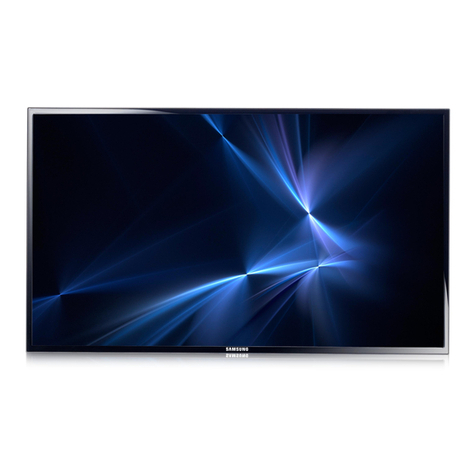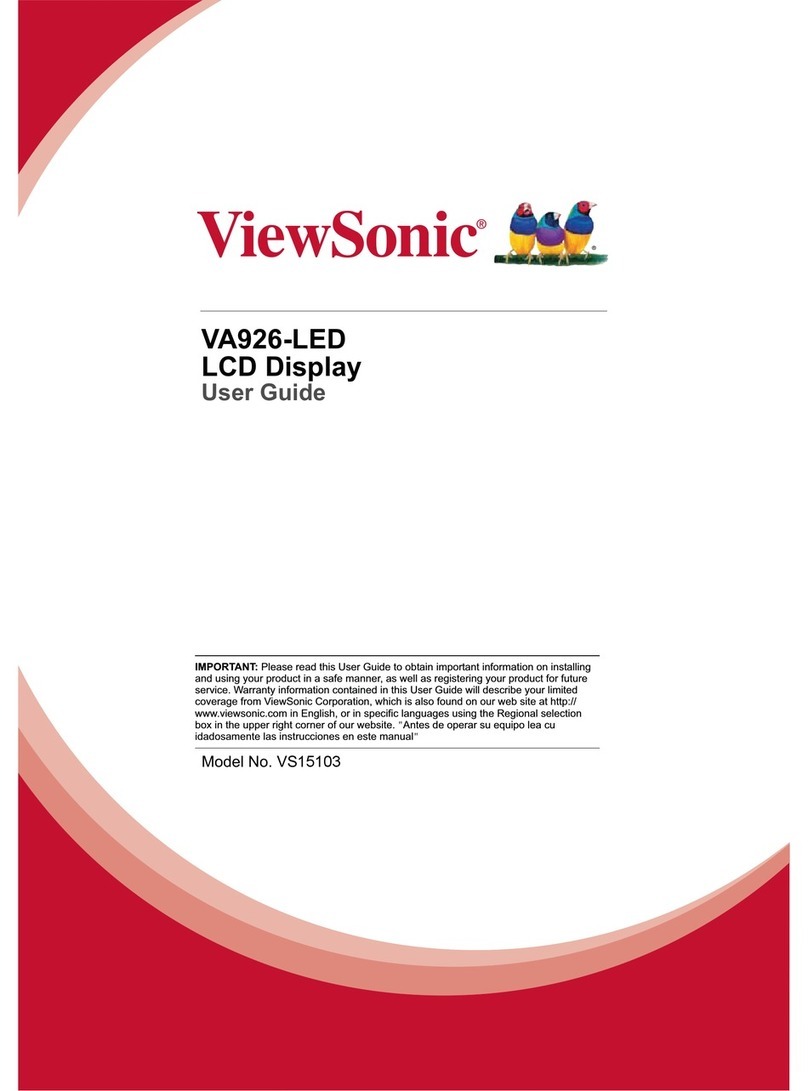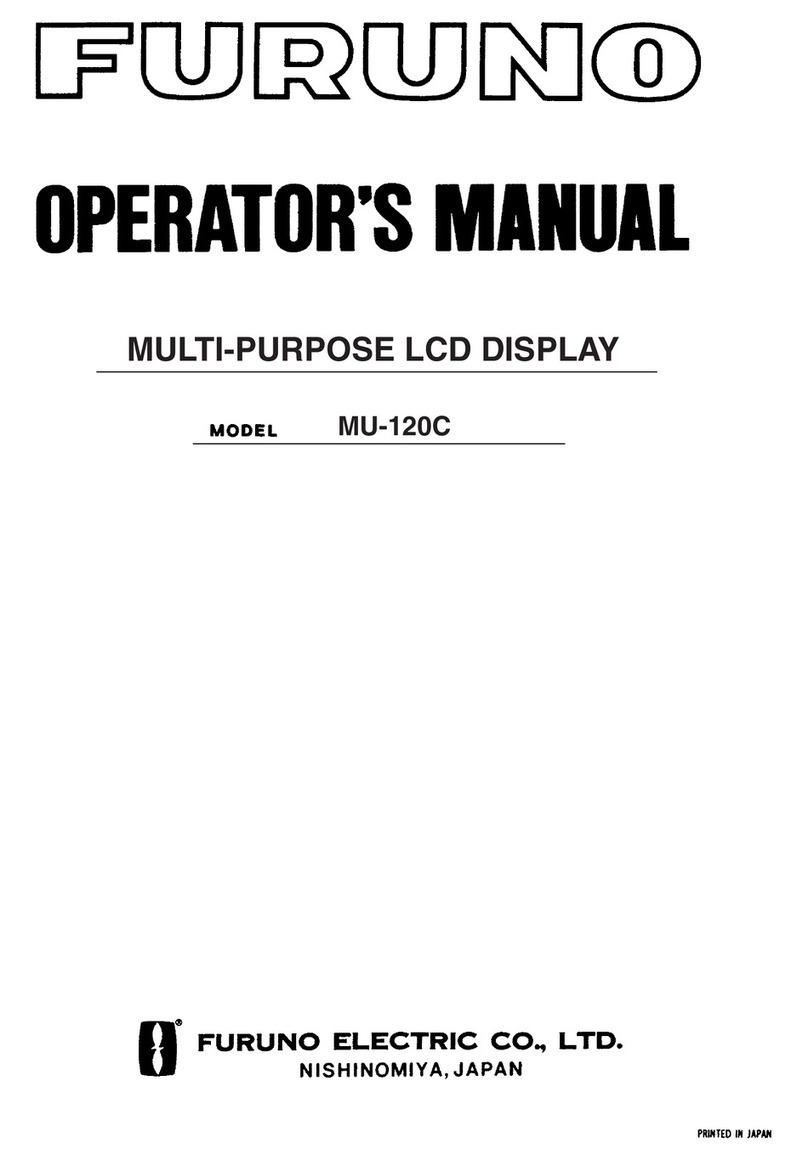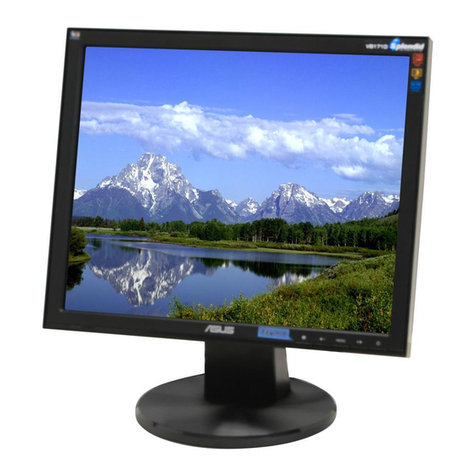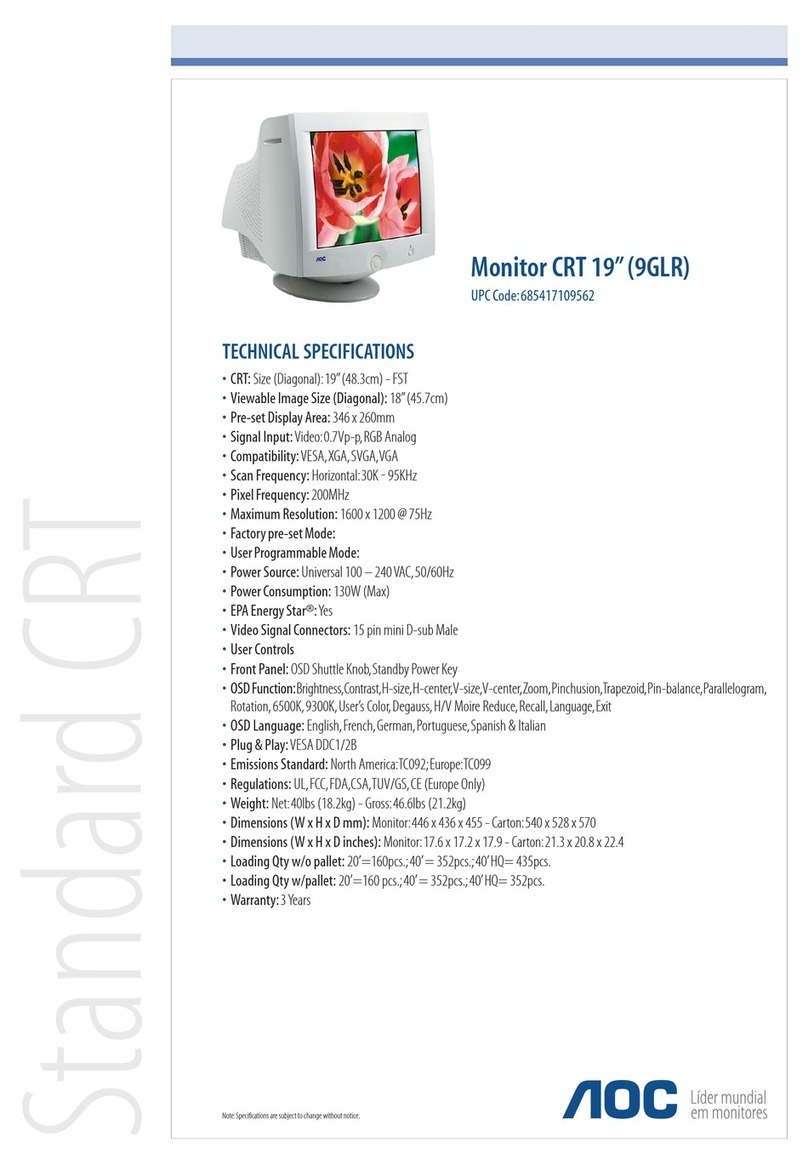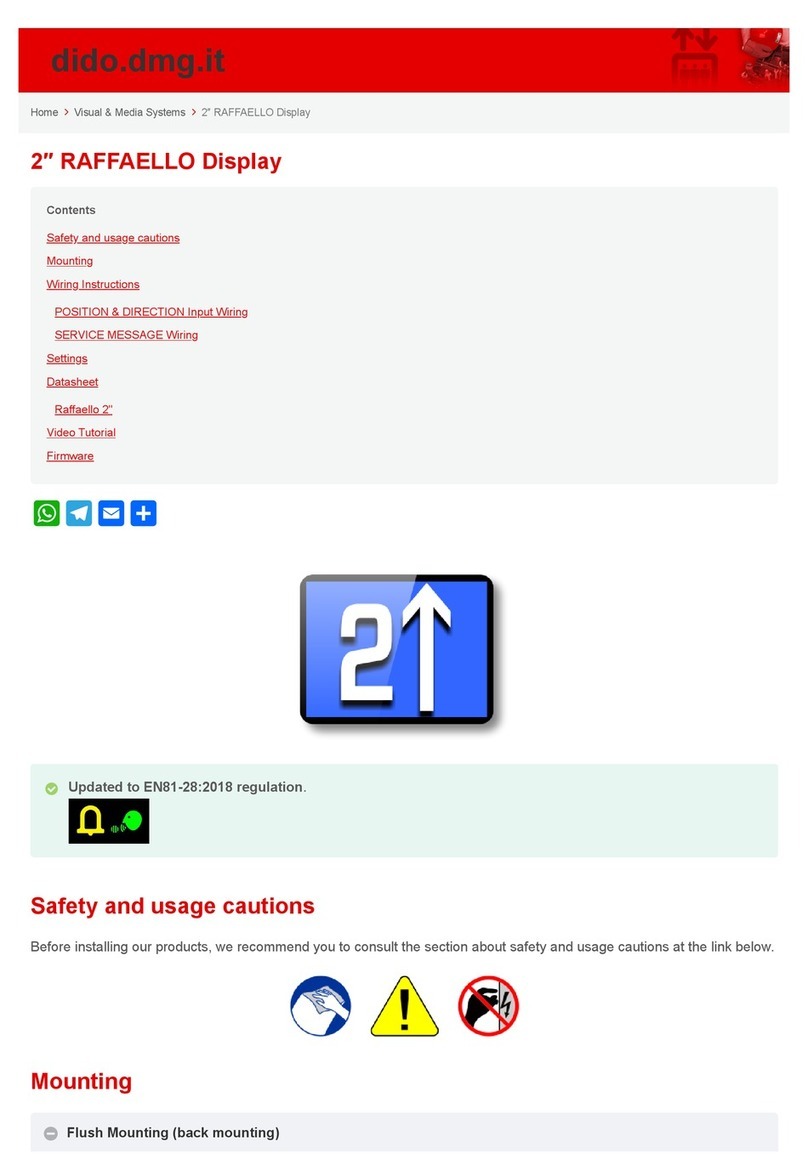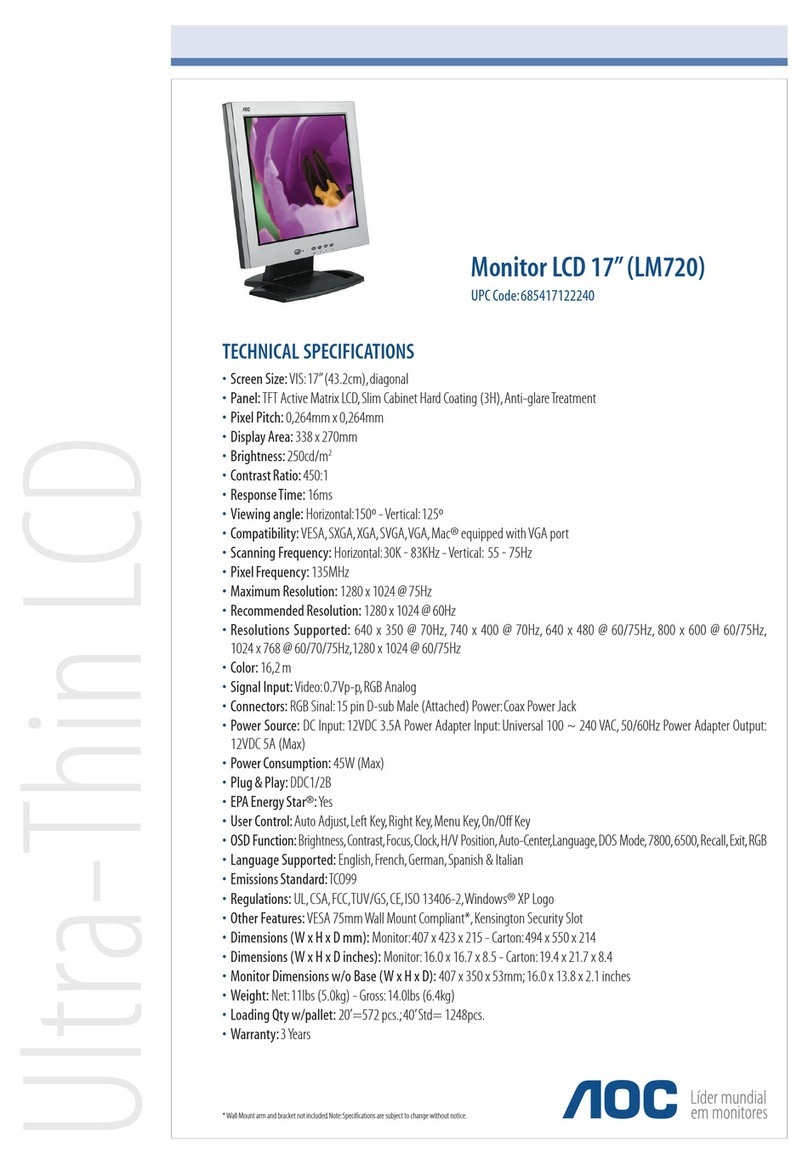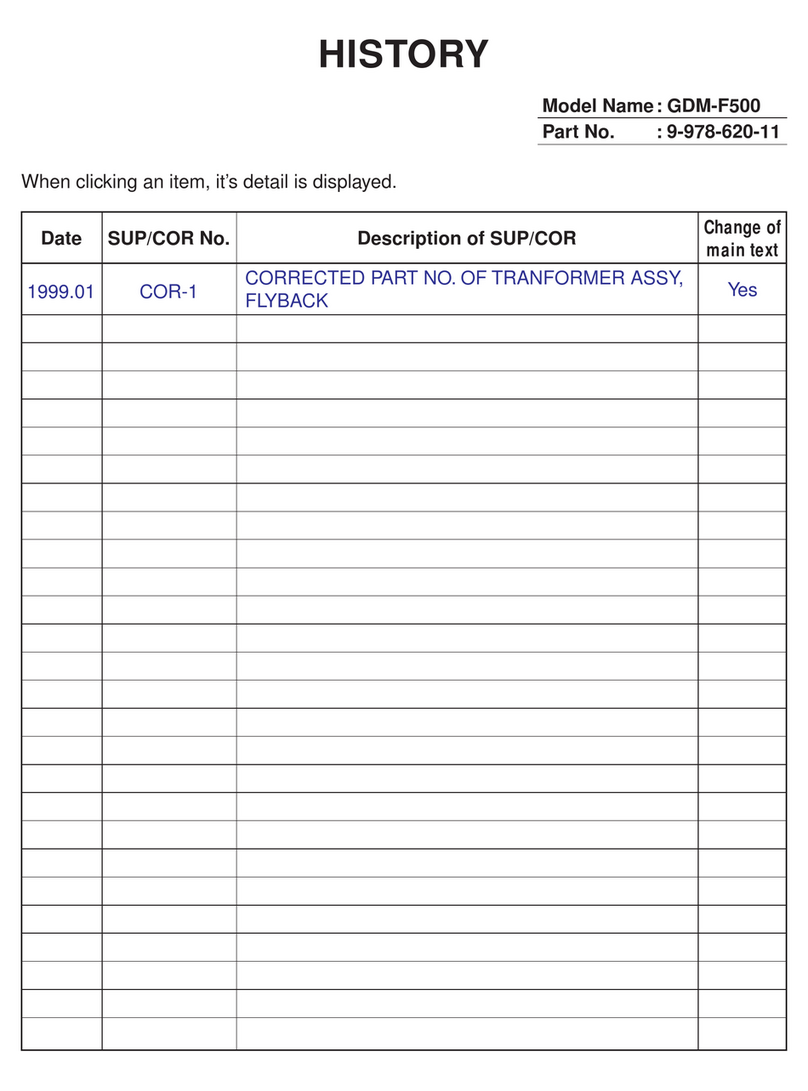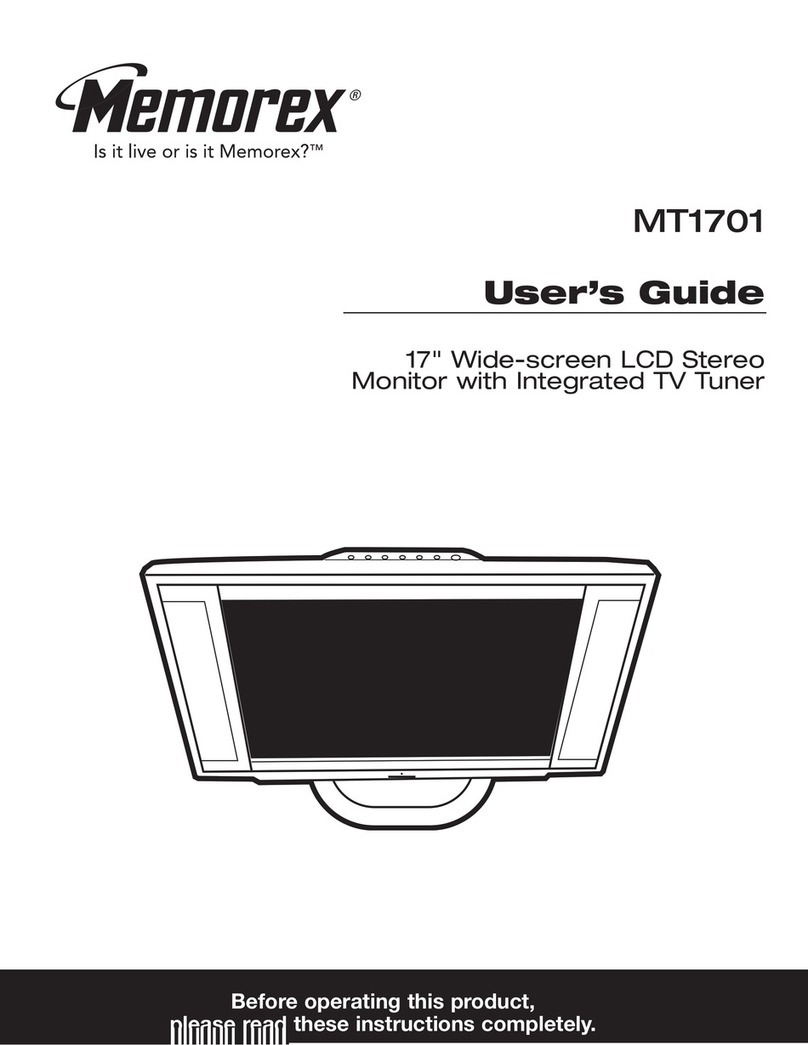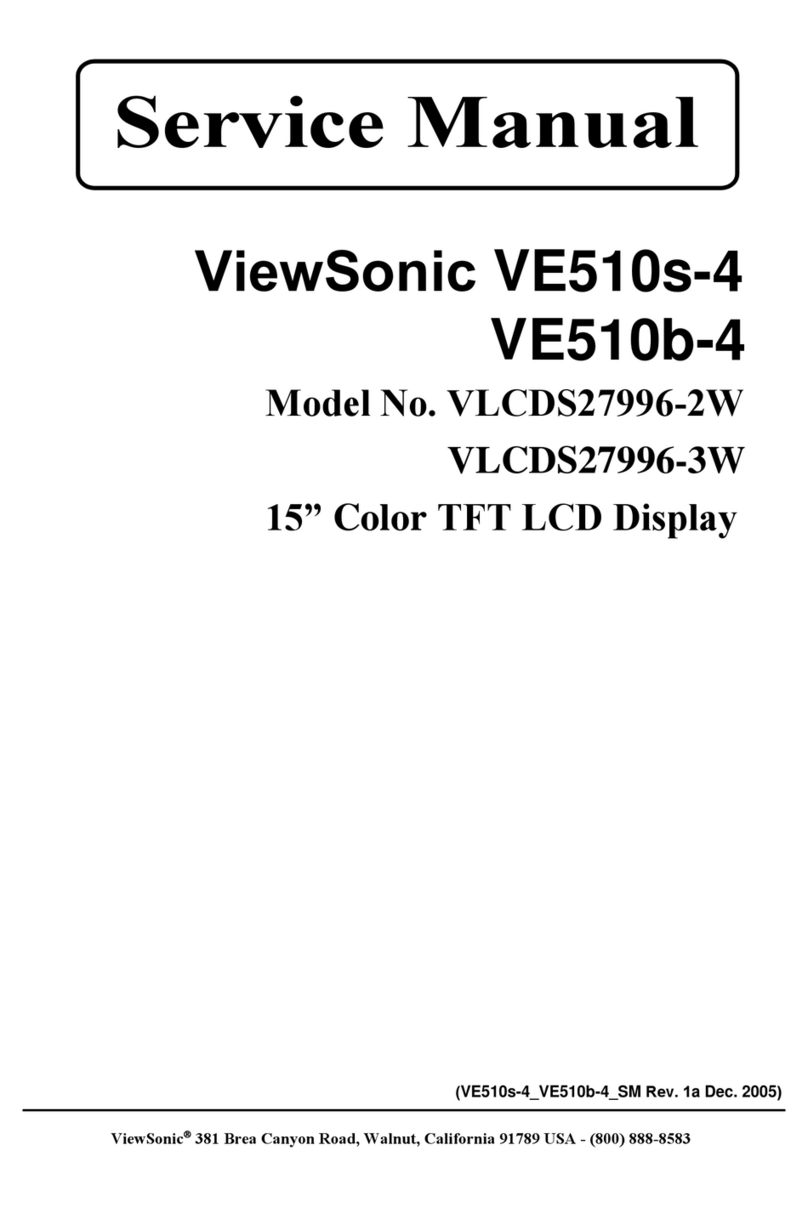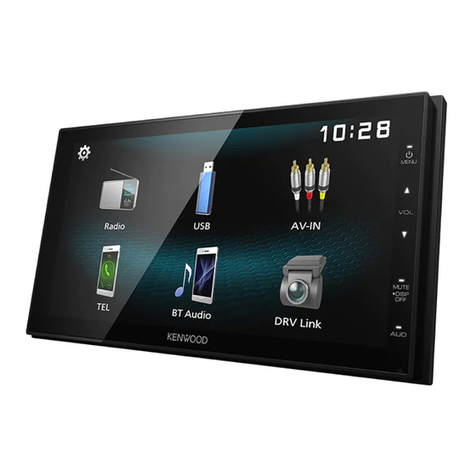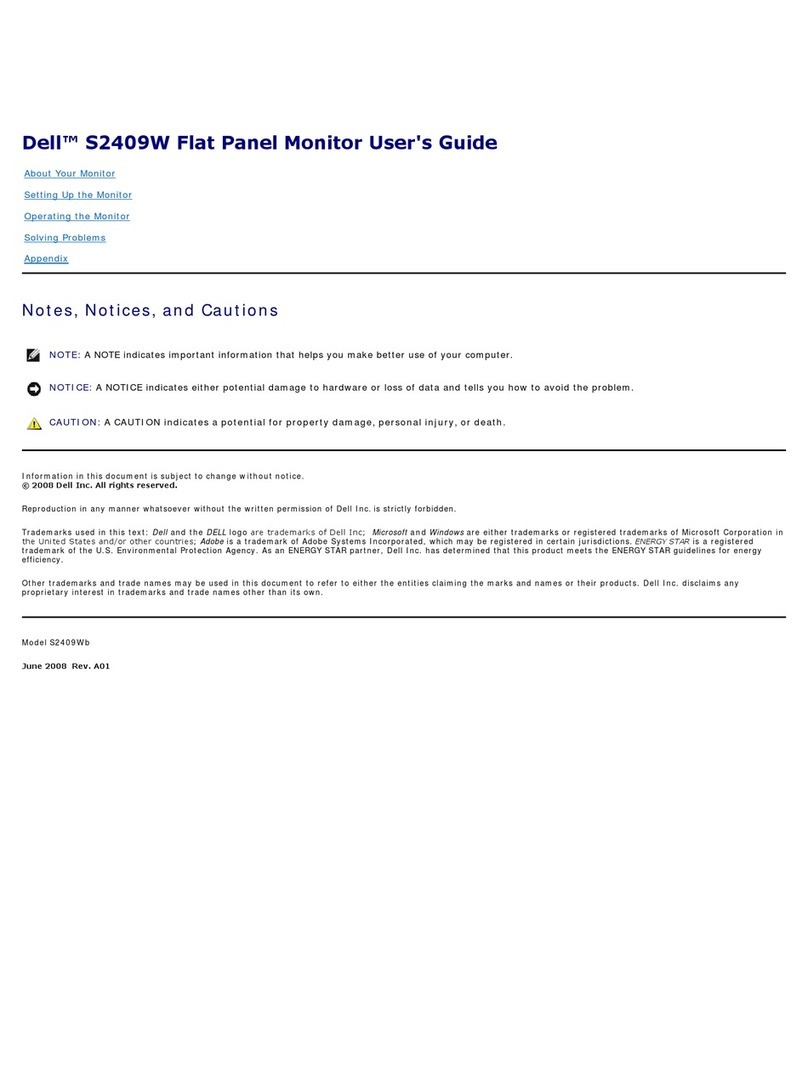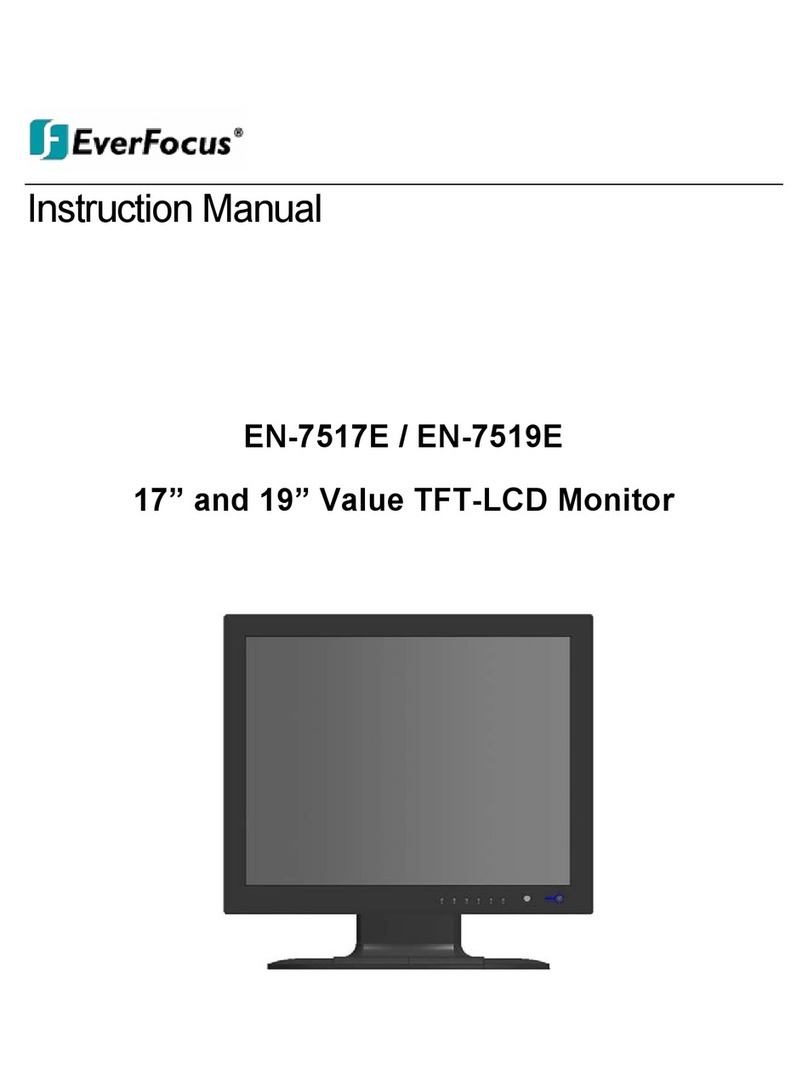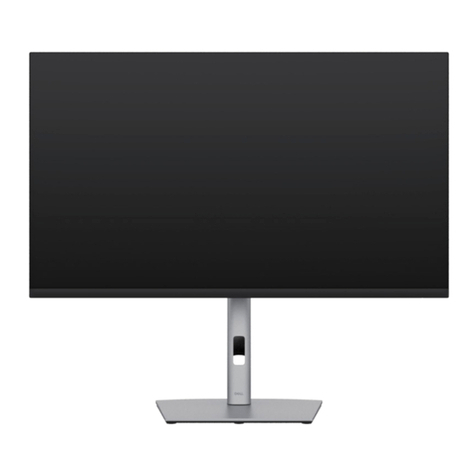Desco Europe Charleswater 99093 Installation and operating instructions

DESCO EUROPE - 2A DUNHAMS LANE, LETCHWORTH, HERTFORDSHIRE, SG6 1BE, UK
PPE-5101.E Page 1 of 5 © 2018 DESCO INDUSTRIES INC
Employee Owned
Dual Operator Continuous Monitor
Installation, Operation and Maintenance
Description
Leading companies use continuous monitors as a
cost effective component in satisfying the clause 5.2.4
Compliance Verification Plan requirements of EN61340-5-1.
The Charleswater Dual Operator Continuous Monitor with
Satellites continuously monitors the grounding integrity of two
operators, and two ESD working surfaces path to ground.
The monitor will provide instantaneous notification of static
control equipment failures, and eliminates the need of costly
and difficult to supervise wrist strap logging record keeping.
This unit is highly cost effective as it is designed to monitor
any conventional single-wire wrist strap and ground cord
system.
The Charleswater Dual Operator Continuous Monitor is
available in the following models:
Item Power
Adapter Input
Wrist Strap
Snap Size
99093 220 VAC 4 mm
99095 220 VAC 10 mm
The Dual Operator Continuous Monitor with Satellites is an
impedance sensing device designed to monitor body types
from a 5th percentile female to a 95th percentile male. This
range covers a 5 feet (152 cm) tall 90 pound (41 kg) person
to a 6 foor 5 inch (196 cm) 250 pound (113 kg) person in
any production environment.* The monitor is powered by a
220 VAC, 60/50 Hz, plug-in transformer which also provides
connection to ground.
No user adjustment required: The Continuous Monitor
is drift-free and designed to be insensitive to the effects of
squeezing or stretching the coiled cord. It requires no user
adjustment.
July 2018
Figure 1. Charleswater 99093 Dual Operator Continuous
Monitor with Satellites
The Dual Operator Workstation Continuous Monitor is a
real time instrument that ensures that critical ESD control
components in a sensitive area are effectively grounded. It
independently monitors the operator and the worksurface.
The instant an operators wrist strap or cord fails, the monitor
will issue audible and visual alarms alerting the user of the
problem. In the same manner, the unit also confirms that
a path to ground of less than 10 megohms (1 x 107ohms)
exists from the ESD protective worksurface(s).
ADVANTAGES OF CONTINUOUS MONITORING
OVER PERIODIC TESTING
Many customers are eliminating periodic touch testing of
wrist straps and are utilising continuous monitoring to better
ensure that their products were manufactured in an ESD
protected environment. Full time continuous monitoring
is superior to periodic or pulsed testing, and can save a
significant amount of money in testing costs and rejected
product. Periodic testing detects wrist strap failures after ESD
susceptible products have been manufactured. The costs
of dealing with the resulting catastrophic failures or latent
defects can be considerable. Dual Operator Workstation
Continuous Monitors eliminate the need for users to test wrist
straps and log the results. Per CLC/TR 61340-5-2 Clause
B.1.3 Constant monitors: “There are also other process
benefits from using constant monitors such as the elimination
of the need to maintain daily test logs and a reduction in the
time for employees to make the daily test. For units that also
monitor the connection of a work surface to protective earth,
it is also possible to reduce or eliminate the checking of the
work surface as part of the periodic audit of the process.”
WAVE DISTORTION DETECTION TECHNOLOGY
PROVIDES TRUE 100% CONTINUOUS MONITORING
From the technical alternatives available, Desco Europe
designs and manufactures many of its Continuous Monitor
product offerings using wave distortion technology. Wave
distortion circuitry monitors current/voltage phase shifts and
provides true 100% continuous monitoring. Electrical current
will lead voltage at various points due to the combinations
of resistance and capacitive reactance. By monitoring these
“distortions” or phase shifts, the wave distortion Workstation
Continuous Monitor will reliably determine if the circuit is
complete.
Made in the
United States of America
*NASA Publication 1024-Anthropomorphic Source Book Volume 1:
“Anthropometry for Designers”
TECHNICAL BULLETIN PPE-5101.E

DESCO EUROPE - 2A DUNHAMS LANE, LETCHWORTH, HERTFORDSHIRE, SG6 1BE, UK
PPE-5101.E Page 2 of 5 © 2018 DESCO INDUSTRIES INC
Employee Owned
Wave distortion technology can be referred to as “vector
impedance monitoring”. This description is valid as the
wave distortion technology measures the impedance at the
monitored banana jack and looks for changes in either the
capacitance or resistance of the circuit which includes the
wrist strap and its wearer. It uses filtering and time domain
sampling to filter out false signals caused by voltage offsets,
60 Hz fields and other electro-magnetic and electrostatic
interference.
In normal factory environments, and with persons whose
capacitance with respect to ground is within design limits (5
feet [152 cm] tall 90 pound [41 kg] person to 6 foot 5 inch
[196 cm] 250 pound [113 kg] person), the Dual Operator
Workstation Continuous Monitor cannot be “fooled”. It will
provide a reliable alarm only when the wrist strap or work
surface becomes dysfunctional or unsafe according to
accepted industry standards. The Dual Operator Workstation
Continuous Monitor is drift-free and designed to be
insensitive to the effects of squeezing or stretching the coiled
cord.
ADVANTAGES OF WAVE DISTORTION AND
SINGLE-WIRE TECHNOLOGY
The Charleswater Dual Operator Workstation Continuous
Monitor allows the use of any standard, single-wire wrist
strap and coiled cord. The monitor/wrist strap/cord system
life-cycle costs are by far lower than alternative systems
which require more expensive & less durable dual-wire cords
and special wrist straps. Dual-wire cords are expensive and
are the weak link of the system. They are the most likely
component to need replacement. Over a five year period this
can make a dual-wire system three times as expensive as a
system utilising single-wire wrist straps and cords.
The dictionary defines constant as uniform and unchanging,
and continuous as uninterrupted. Nonetheless, some
dual-wire resistance monitors utilise a pulsed test current and
do not really provide continuous monitoring. For example,
during each 2.2 second pulse cycle of a leading “constant”
resistive monitor, electrical current is pulsed for only 0.2
seconds followed by an unmonitored interval of 2 seconds.
This leaves the user/wrist strap unmonitored for over 90%
of each cycle. Damaging ESD events can easily occur in
the portion of the time in between the pulses. The off period
of 2 seconds equals 2 billion nanoseconds, and “it takes
only about 25 volts applied for 100 nanoseconds to blow
most memories or microprocessor.”* The dual-wire system
does not meet all industry ESD S6.1 specifications, as the
cords do not meet the EOS/ESD Association guidelines for
the 0.45 kg to 2.28 kg “breakaway force” requirement for
ensuring a reliable path-to-ground and preventing accidental
disconnects.
By using the reliable wave distortion technology to determine
if the circuit is complete, there are no false alarms. There
is no need to adjust or tune the monitor to a specific user
or installation. The miniscule amount of electrical current
(less than 1 volt coiled cord signal) required to generate the
waveform has never caused reported skin irritation and is
extremely safe for use in voltage sensitive applications such
as disk drive manufacturing.
Packaging
1 Dual Operator Continuous Monitor (Control Unit)
2 Satellite Remotes
1
Power Adapter, 24 VAC
2 Mat Monitor Cords (Black), 1.8 m
2 Mat Ground Cords (Green and Yellow), 1.8 m
2 Satellite Remote Cables, 2.1 m
4 Push and Clinch Snaps
4 Countersink Washers and Screws (#4 x 1/4")
6 Mounting Screws (#8 x 3/4")
1 Certificate of Calibration
Installation
Remove the monitor and satellites from its packaging.
Inspect for any shipping damage. Confirm that the
worksurface is 1 x 107ohms or less and has a conductive
layer such as Dual Layer Rubber, Dissipative 3-Layer Vinyl,
or Micastat®Dissipative Laminate with conductive buried
layers.
The Control Unit for the Dual Operator Continuous Monitor is
normally installed under the bench top toward the front edge
of a workstation where the LEDs are easily visible. Use the
enclosure’s flanges to mount the monitor.
*1981 article by Donald E. Frank - Electrical Overstress Electronic
Discharge Symposium Proceedings
screws
Figure 2. Mounting the Control Unit
Figure 3. Typical setup of the Dual Operator Continuous
Monitor and Satellites

DESCO EUROPE - 2A DUNHAMS LANE, LETCHWORTH, HERTFORDSHIRE, SG6 1BE, UK
PPE-5101.E Page 3 of 5 © 2018 DESCO INDUSTRIES INC
Employee Owned
SATELLITE REMOTES
The Satellite Remotes can
be installed up to
2.1 m away from the monitor
control unit. Two operators
plus two worksurfaces
can be monitored at separate adjacent workstations. The
worksurface mat circuit may be bypassed by a switch located
at the rear of the satellite. Also shown on each satellite
remote is an unmonitored ground connection jack where a
supervisor, guest, or equipment can be grounded.
NOTE: Replacement satellites are not available. Satellites
cannot be switched between control units. If satellites are
damaged or not performing correctly, contact Desco Europe
for an RMA.
The following procedure will outline how to correctly install
the Dual Operator Continuous Monitor and its satellites to
properly monitor an ESD protected workstation.
1. Follow the dimensions listed in figures 4 and 5 to properly
mount the Dual Operator Monitor’s Control Unit and
Satellite Remotes.
2. Connect the Satellite Remotes to the Control Unit using
the included cables.
Power Adapter
Workstation #2 Workstation #1
Figure 6. Typical setup of the Dual Operator Continuous
Monitor and Satellites
To Satellite
Mat Monitor
Cord
Mat Ground
Cord
Worksurface Mat
or
Screw allows ground
cord to be bolted to
mat and prevent it
from disconnecting
Figure 7. Installing the Mat Ground and Mat Monitor
Cords
72
118
130
28
2X 5
Figure 4. Mounting hole locations of the Control Unit
(dimensions in mm)
53
89
98
23
2X 5
Figure 5. Mounting hole locations of the Satellite Remote
(dimensions in mm)
3. Mat monitoring may be bypassed by using the switch
located inside the hole located at the rear of the satellite
remote.
4. Install screws and washers or push and clinch snaps
30 cm to 183 cm apart from each other on the
worksurface
mat. Make sure that they pierce and clinch the bottom
side of the mat.
5. Ground the worksurfaces by using the included mat
ground cords. Snap one end to the worksurface mat and
connect the other end to a common point ground.
6. Connect the mat ground cord to the remaining worksurface
snap. Connect the other end of the cord to the back of the
satellite remote.
7. A convenient 3-wire 120 VAC outlet should be located and
tested for proper wiring and grounding. Use item number
224713 for 220 VAC UK outlets and item number 224715
for 220 VAC European outlets.

DESCO EUROPE - 2A DUNHAMS LANE, LETCHWORTH, HERTFORDSHIRE, SG6 1BE, UK
PPE-5101.E Page 4 of 5 © 2018 DESCO INDUSTRIES INC
Employee Owned
8. Plug the power adapter into the outlet and connect its
plug into the power jack located at the back of the Control
Unit. The green worksurface LEDs should illuminate. If
the red worksurface LED(s) illuminate and alarm, inspect
the snap fastener and ground cords for proper connection.
The operator LEDs will illuminate red when an operator is
not connected. The Dual Operator Continuous Monitor is
now ready for use.
Installation on Micastat®Laminate
Materials needed:
2 Flush Mount Ground Laminate Inserts
1 Installation Tool for Flush Mount Insert
1. Install the Flush Mount Inserts first. It is recommended to
install one in the right back corner and the other in the left
back corner of the Micastat®laminated bench top.
2. Once both inserts are installed, cut the ground cord
supplied with the monitor into two pieces; make sure that
the tinned end is long enough to connect from the
worksurface terminal on the Satellite Remote to one of the
flush mount terminals located under the bench.
3. The remaining wire can then be used to connect the other
flush mount terminal to ground using the supplied ring
terminal. The shrouded moulded end can then be cut off.
When complete, one flush mount terminal will connect the
Micastat®laminate to ground while the other will connect
it to a satellite remote. The satellite remote then monitors
the ground connection between the two inserts, and since
Micastat®is the only ESD laminate made with a physical
uniform ground layer, it will monitor the entire Micastat®
surface ground. The wires will stay under the bench,
maximising the usable space on the bench top.
Operation
When the satellite remote unit is installed and connected
to a grounded ESD protective worksurface, the monitor’s
green worksurfaces LED’s and red operator LED’s should
be illuminated. The monitor takes 6 seconds to activate its
audible alarm circuitry when first powered.
To use the monitor:
1. Plug a wrist strap cord, into the jack labelled
OPERATOR on the satellite remotes. This automatically
activates the selected operator channel. The red operator
LED should illuminate, and the buzzer should sound.
2. Remove the charges from your body by making contact
with a properly grounded ESD worksurface. Snap the
cord to the wristband, which should fit snugly on your
wrist. This should silence the alarm and cause the LEDs
to switch from red to green. If this does not happen,
check the wrist cord for continuity or damage. Examine
your wristband and ensure that it has a secure fit. If you
have dry skin, apply an approved dissipative hand lotion
such as Reztore® ESD Hand Lotion.
All Desco Europe single-wire monitors with wave distortion
technology include the Park Snap feature. Use the Park
Snap to store the operator’s wrist cord and enable standby
mode while the operator is away from the workstation.
Before disconnecting the coiled cord from the wristband, the
operator touches the Park Snap to disable the audio alarm
for 6 seconds. Within the 6 second period, the operator can
disconnect their wrist cord from their wristband and attach it
to the Park Snap before the audible alarm sounds. If the cord
is plugged into the OPERATOR jack, the monitor will alarm
continuously until the cord is either parked or unplugged.
WORKSURFACE CHANNEL
The Dual Operator Continuous Monitor’s worksurface
monitoring circuitry is sufficiently sensitive to detect
extremely low current, allowing it to be used with mats having
a resistance of up to 1 x 107ohms (10 megohms). If the user
desires not to monitor the worksurface, the circuit can be
bypassed with the switch located at the rear of the satellite.
When the monitor is connected to a static dissipative
worksurface, the amount of current that flows is a function of
the total resistance between the monitor and the worksurface
to ground. When the resistance of the worksurface is below a
present threshold, the monitor will indicate good. Conversely,
if the resistance level is high when compared to the monitor’s
reference, the unit will alarm. This is an integrating resistance
measuring circuit. Therefore, it is relatively insensitive to
externally induced electromagnetic fields. The resistance
threshold is factory set to 10 megohms (1 x 107ohms).
Custom worksurface range is available upon request.
Contact customer service for more details.
Note: Per IEC 61304-5-1 Clause 5.3.3 Personnel grounding
“All personnel shall be grounded or equipotentially bonded
according to the requirements below when handling ESDS.”
The ESD control plan should include a tailoring** statement
that continuous monitors are used and that consistent with
manufacturer’s design grounding is via AC adapter cord to
equipment ground.
** Per IEC 61340-5-1 Clause 5.1.3 Tailoring: “This standard,
or portions of it, may not apply to all applications. Tailoring is
accomplished by evaluating the applicability of each requirement
for the specific application. Upon completion of the evaluation,
requirements may be added, modified or deleted. Tailoring
decisions, including rationale and technical justification, shall be
documented.”

DESCO EUROPE - 2A DUNHAMS LANE, LETCHWORTH, HERTFORDSHIRE, SG6 1BE, UK
PPE-5101.E Page 5 of 5 © 2018 DESCO INDUSTRIES INC
Employee Owned
Calibration
Frequency of recalibration should be based on the critical
nature of those ESD sensitive items handled and the risk
of failure for the ESD protective equipment and materials.
In general, Desco Europe recommends that calibration be
performed annually.
Use the Desco 98221 Wave Distortion Monitor Verification
Tester to perform periodic verification (once every 6-12
months) of the Dual Operator Continuous Monitor. The
verification tester can be used to check the test limits of the
Dual Operator Continuous Monitor without removing it from
the workstation.
See TB-3074.E for more information.
Figure 8. Desco
98221
Wave Distortion Monitor
Verication Tester
Specifications
Input Voltage and
Frequency
(External Adapter)
AC/DC Power Adapter
Power Input:
100-240 VAC, 50/60 Hz
Power Output:
24 VDC @ 150 mA
Cable Length:
5 ft. (1.5 m)
Operating Temperature 50 to 95 °F (10 to 35 °C)
Environmental
Requirements
Indoor use only at altitudes less
than 6500 ft. (2 km)
Maximum relative humidity
of 80% up to 85 °F (30 °C)
decreasing linearly to 50% @
85 °F (30 °C)
Dimensions
(Monitor)
5.13" L x 2.85" W x 1.11" H
(130 mm x 72 mm x 28 mm)
Dimensions
(Satellite Remote)
3.87" L x 2.09" W x .90" H
(98 mm x 53 mm x 23 mm)
Weight
(Monitor)
0.25 lbs. (0.11 kg)
Weight
(Satellite Remote)
0.14 lbs. (0.06 kg)
Operator Test Range*500 kilohms to 10 megohms
impedance
Worksurface Test Limit** 10 megohms (±10%)
Operator Test Voltage 1.2 V peak-to-peak @ 1.2 µA,
open circuit
Worksurface Test
Voltage
5 to 7.5 V, open circuit
Alarm Response Time <50 ms
Country of Origin United States of America
*This cannot be verified with standard DC test equipment.
The continuous monitor is an impedance sensing device, and
the limits are determined by the magnitude and angle of the
impedance.
**The worksurface mat must have a conductive layer such
as Dual Layer Rubber or Dissipative 3-Layer Vinyl with
conductive buried layers. Desco Europe workstation monitors
are not recommended for use with homogeneous matting.
Limited Warranty, Warranty Exclusions, Limit
of Liability and RMA Request Instructions
See the Desco Europe Warranty -
DescoEurope.com/Limited-Warranty.aspx
Table of contents
